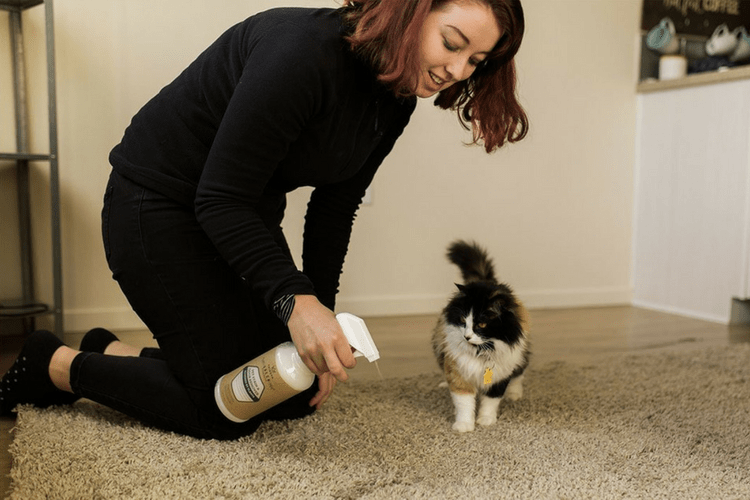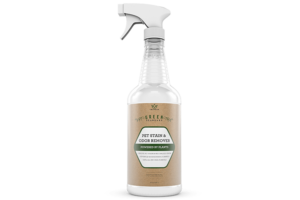How Do Pet Stain Removers Work?
If you’ve been a pet parent long, you’ve likely heard about bio-enzymatic or ‘enzyme’ cleaning products. But unless you have a background in Biochemistry the ‘how’ behind the ‘what’ probably remains a mystery. No one wants to use a product they’re not sure of – so we’ve put together a brief explainer on bio-enzymatic cleaners.
How Pet Stain Removers Work
Pet stain removers work by using good bacteria and enzymes that basically consume organic material. As the organic matter (your pet’s mess) is consumed, the stain and odor dissipate. Each product is different, but you’ll generally want to spray on and let it dry for best results.
What is in enzyme cleaners?
The main difference between these products and a standard carpet shampoo is bacteria and enzymes. These two organic components work together to create a natural cleaning solution.
Just like there are ‘good’ bacteria for your body (yogurt, probiotics, etc.) these non-pathogenic bacteria provide benefits without any health risks. Enzymes attach themselves to the staining agent, be it blood, urine, feces, or food and break it down. (There are other types of enzymes which target different types of stains – but most Pet products use Protease enzymes which target protein based molecules).
The enzymes attach themselves to the staining agent and as long as the area is moist and more of the ‘food’ is available, the bacteria will multiply and continue ‘feeding’ on the stain thanks to the work of the enzymes. Eventually, the stain is gone as is the odor.
Is it safe to use enzyme cleaners?
Actually, because these products are non-toxic, they’re actually safer than most chemically based products! When the soiling agent has been broken down and consumed the bacteria die off (this is why most enzymatic cleaners recommend vacuuming the surface once it is completely dry). Enzyme cleaners have become immensely popular because they’re both safer and more effective than traditional methods when it comes to treating pet messes.
Additional benefits to enzymatic cleaners
Here are just a few more things we love about enzymatic cleaners:
- The bacteria are microorganisms, which means they can get into smaller spaces than traditional chemicals – allowing for a thorough cleaning
- These products are safer for the environment than a traditional chemical cleaner
- Because good and bad bacteria compete for the same food and resources, introducing non-pathogenic bacteria helps to displace the disease-causing types

Tips to get the most out of your enzyme cleaner
- Don’t apply anything else, because some things (even natural products like vinegar) can act as enzyme inhibitors
- Follow the directions TO THE LETTER – these products require very specific conditions to properly function
- Consider covering the area with plastic to create the warm, damp environment most conducive to bacteria
- Don’t get frustrated with old messes, they can be treated but often require multiple cycles.
- Allow the area to completely air dry, this is a part of the process
Let us know what type of furbaby you have and if you’ve had success with enzyme cleaners in the comments below!
Please note: shopping on Amazon using the links from this page may result in TriNova receiving a referral commission.








When we moved into our house we tore out the carpets in the bedroom. Under the carpet were beautiful hardwood floors. But apparently the owners before had a dog. There were dark spots in about four areas on the floor. I’m assuming these were dog stains. They did have a dog. How can I remove these? Do I have to refinish the whole room? Can I use this product on the wood floor? Thank you
Genesis 950 has worked in my house!!! I foster dogs and cats and accidents happen, especially when a new animal comes in. It’s so hard to get rid of that cat urine smell especially and I threw away many area rugs before finding 950. It’s amazing!